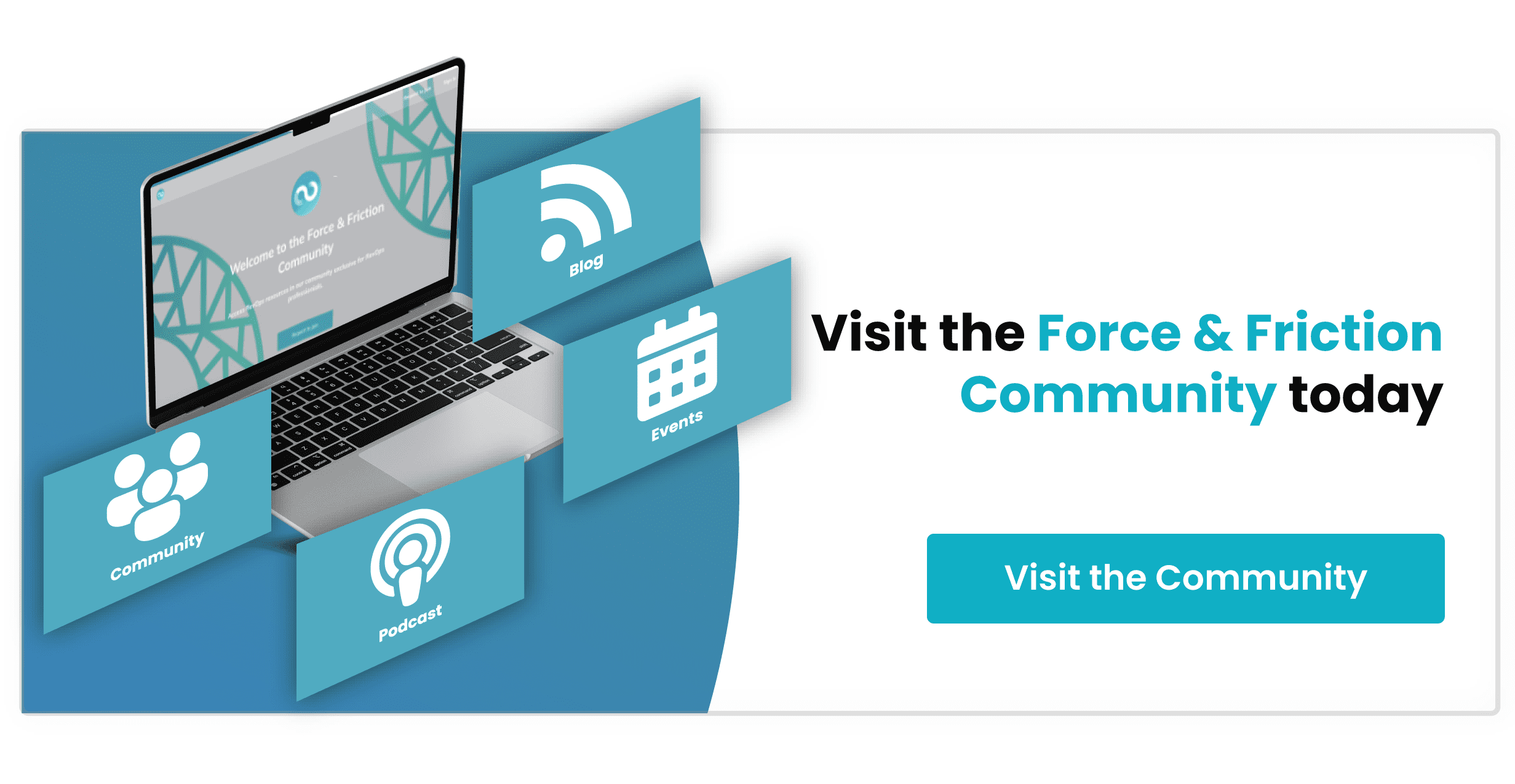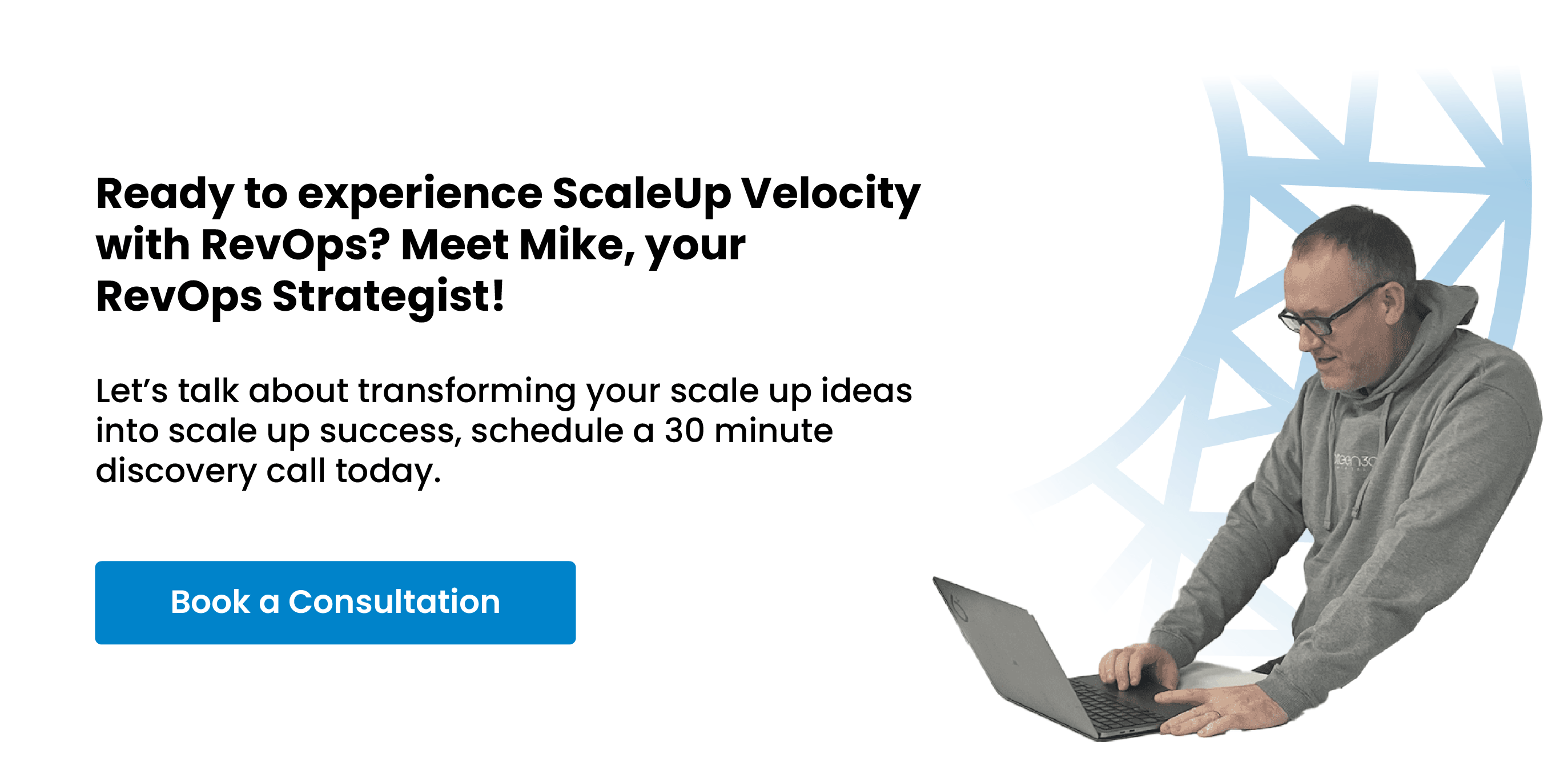
Unlock Business Growth: The Importance of Defining and Documenting Your Revenue Processes for Scaling Up with RevOps | #RevOpsLife
The foundation of efficiency and RevOps success is systemized processes.
I cannot stress enough that defining and documenting your revenue processes is critical for any business looking to scale up and achieve long-term success.
Revenue Operations (RevOps) is a cross-functional approach to optimizing your revenue generation process, and documenting these processes is one of the first steps you should undertake to ensure you achieve a successful RevOps implementation.
When it comes to revenue processes, I regularly see organizations get off to a bad start without the correct framework. Many businesses operate with a patchwork of ad hoc procedures, which leads to inefficiencies, miscommunication, and a lack of transparency.
Listen to this Article on Spotify
Accountability also goes south and blame culture sets in with infighting and silos get stronger instead of being neutralized.
This not only affects the bottom line but also limits the ability of the business to scale and adapt to changing market conditions.
I always advise that by defining and documenting your revenue processes, putting in the time early on is essential…. As a result, you can establish clear guidelines and protocols that ensure everyone is working towards the same goals, with a common understanding of how things should be done.
We all know Mcdonald's, this is a shining example and the ultimate franchise business, one built globally on nailed-down systems and processes.
When consulting on RevOps, the getting started checklist I recommend to our clients is that I request that the C Suite sponsor this as a serious initiative, like a preamble piece of work project….and appoint a singular person to manage the wider teams to develop the processes.
You want to avoid the head of sales running sales processes, and the head of marketing running marketing processes, Yes I did say that….sure they will have a huge input, however, the responsibility to adopt and look at the wider cross-functional integration of processes needs one lead without bias.
That lead person oversees each individual departmental team and once this accountability structure is in place, the next step in defining and documenting your revenue processes is to conduct a comprehensive review of all existing processes.
This includes reviewing all processes (by department) that contribute to revenue generation and should include:
-
Marketing activities
-
Lead generation
-
Customer acquisition
-
Onboarding
-
Customer retention & referrals
-
Revenue recognition
-
Fulfilment of services
-
Offboarding
The goal is to identify areas of inefficiency, duplication, or miscommunication, and to develop a clear understanding of what works and what needs to be improved.
Once your team has completed this review, the next step is to document the processes.
This should include a clear description of each process, including:
-
Including its goals
-
Inputs
-
Outputs
-
And your key business metrics
We use tools like Miro.com to map processes, we find as an interactive whiteboard team collaboration increases, and the documentation should be easily accessible to all employees through playbooks (we store these in HubSpot), so they are linked to the central CRM and operating system.
Once processes are completed, they are really never done…. and should be updated regularly to reflect any changes or improvements with document reference numbers to track changes and revisions (i.e. Date and Version number.
An example of a 6teen30 Digital document number would be for onboarding - 630-CO-0222.v1 - this refers to 630 being 6teen30, CO for Client Onboarding and 0222 being February 2022, with .v1 being the first version.
One of the key benefits of defining and documenting your revenue processes is the ability to identify and prioritize areas for improvement. Reducing negative friction and applying positive force to the flywheel to drive revenue growth.
By regularly reviewing the processes, with your teams and client feedback - you can identify areas where automation or process improvement can drive greater efficiency, reduce costs, and improve results for the business and the experience for the client.
An example could involve automating manual tasks, streamlining communication between teams, or improving the accuracy and timeliness of data.
Another key benefit of defining and documenting your revenue processes is the ability to measure and track results which after all is what drives businesses and people forward to be better.
By establishing clear metrics and KPIs, you can monitor the performance of each process and identify areas where performance can be improved. This information can be used to make informed decisions about investment in technology, process improvement, or other initiatives that drive greater efficiency and better results.

How to Define The Processes:
As we have covered, defining and documenting your revenue processes is a crucial step in scaling up your business through RevOps.
Here are some recommendations for executing and implementing this process:
1: Assess Current Processes:
Take a step back and assess the revenue processes that your company currently has in place. Identify areas that are working well and areas that need improvement.
-
Start by conducting a thorough review of your existing revenue processes. This could involve speaking with employees, analyzing data, or conducting customer surveys.
-
Use this information to create a detailed report that outlines what is working well, what needs improvement, and what can be optimized.
-
Consider using process mapping tools, such as flowcharts or swim lane diagrams, to visualize your current processes and identify areas for improvement.
2: Map Out Your Revenue Processes:
Create a detailed map of each revenue process, this will help you to understand how each process fits into the bigger picture and identify any bottlenecks or inefficiencies.
-
To map out your revenue processes, start by defining the steps involved in each process, the stakeholders involved, and the tools and systems used.
-
Use a visual representation, such as a flowchart or swim lane diagram, to illustrate each process and highlight areas for improvement.
-
Consider creating a cross-functional map that shows how each process interacts with other departments and systems.
3: Establish Standard Operating Procedures (SOPs):
SOPs ensure that everyone is working from the same playbook and that processes are consistent and reliable.
-
Once you have mapped out your revenue processes, it is time to create standard operating procedures (SOPs) for each one.
-
SOPs should outline the steps involved in each process, the roles and responsibilities of each stakeholder, and the tools that will be needed to deliver the SOP.
-
Make sure that SOPs are clear, concise, and accessible to all relevant stakeholders.
4: Document Processes and SOPs:
Make sure that your revenue processes and SOPs are properly documented and accessible to all relevant stakeholders. This will make it easier for new hires to understand how things are done and for existing employees to refer back to if they need a refresher.
-
Having the correct documentation is essential to ensure that your revenue processes and SOPs are accessible and usable.
-
Consider using a centralized repository, such as a shared drive or cloud-based document management system, to store your documentation or playbook in HubSpot for example.
-
Make sure that all documentation is up-to-date and reviewed regularly to ensure accuracy and relevance.
-
Pre-agree review date timelines.
5: Continuously Monitor and Improve:
With regular reviews, you can identify areas for improvement and make changes as needed. Continuous improvement will help to ensure that your processes remain efficient and effective over time.
-
Regularly review and evaluate your revenue processes to ensure that they are working as intended.
-
Use data and feedback from employees and customers to identify areas for improvement and make changes as needed.
-
Consider implementing process improvement methodologies, such as Lean or Six Sigma, to drive continuous improvement.
-
Encourage employees to provide feedback and suggestions for improvement, feedback loops are essential. And make sure that their suggestions are taken into account when making changes to your revenue processes.
By executing and implementing these recommendations, you will be able to define and document your revenue processes, ensuring that they are consistent, reliable, and efficient.
This will help you to scale up your business through RevOps and achieve your growth goals.
Some mistakes to avoid:
The biggest mistake I see businesses make when implementing Revenue Operations (RevOps) processes is
1: Failing to clearly define and document their processes.
Without clear definitions and documentation, your processes can become fragmented, inconsistent, and ineffective. This can lead to employee confusion, increased operational costs, and decreased revenue.
2: Another common mistake is failing to involve all relevant stakeholders in the process of defining and documenting RevOps processes.
This can result in processes that are not aligned with the needs of the business, and can also lead to resistance and pushback from employees who are not part of the process.
3: Additionally, some businesses make the mistake of assuming that RevOps processes can be implemented overnight.
The reality is that RevOps is a continuous improvement process, and it takes time to fully implement and optimize processes. Without a long-term commitment and a dedicated effort, RevOps initiatives are likely to fall short of their potential.
4: Finally, some businesses neglect to regularly review and update their RevOps processes.
This can lead to processes becoming outdated and ineffective, and can also result in a lack of accountability and transparency within the organization.
In conclusion:
Defining and documenting your revenue processes is a critical first step in establishing a successful RevOps implementation.
By creating a clear, transparent, and standardized approach to revenue generation, you can drive greater efficiency, improve results, and lay the foundation for long-term success. So, take the time to review, document, and optimize your revenue processes, and start seeing the results for yourself.
#StandardOperatingProcedures #ProcessImprovement #RevOpsLife #RevenueOperations #ScaleUp






%20-%20Teal.png?width=500&height=130&name=Force%20%26%20Friction%20-%20Branding%20-%20Logo%20(White)%20-%20Teal.png)